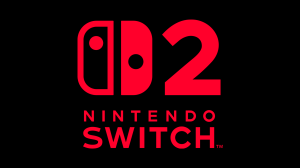The Fantastic Four: First Steps is a part of the Marvel Cinematic Universe, but it’s not set in the same world where most of the other movies and TV shows are based. The MCU introduced the concept of the multiverse and parallel realities back in Phase Four, and this is the first movie to be set on an entirely new world, apparently with no connections to the main storyline we’ve been following. Director Matt Shakman talked about that choice in an appearance on The Official Marvel Podcast this week. To him, it was a way of honoring the Fantastic Four’s legacy as Marvel’s first superhero team, and introducing them in a setting that made the most sense for them.
Videos by ComicBook.com
“The Fantastic Four were created in the 60s, during the space race,” Shakman said. “it was a time of optimism, of looking to the stars, and the idea that technology and heart can solve any problem. It’s so baked into the DNA of the comic book that it just felt like, why not set it in that time? We wanted it to feel like 60s New York City, but with a layer of retrofuturism on top of it. What I love about New York City is, it shows its layers of history. You can see the beginning, you can see the dawn of the century, you can see the 60s, you can see the present day — and they all still coexist in a great way when you go to New York.”

In addition to honoring Marvel Comics history, this setting allows First Steps to characterize the Fantastic Four by their impact on the world around them — particularly Reed Richards, a.k.a. Mr. Fantastic, played by Pedro Pascal. Shakman explained, “We wanted to add that layer of, ‘What if Reed Richards existed?’ And he would have been doing things really important in society for many decades before they became the Fantastic Four. You know, he was a wunderkind, he was a child prodigy. He’s Steve Jobs meets Einstein. So the idea that he would have changed the technology in this city felt really exciting to us.”
Taken together, the retrofuturist aesthetic of the First Steps is accomplishing much more than fans may have realized at first glance. “You see old familiar New York with these kind of shoots, these green shoots of Reed Richards’ technology growing out of the ground around it,” Shakman said. “It was just about kind of understanding what people in the 60s thought the future would look like, then bringing that back to a base level 60s period movie. So that’s what it was — it was like, ‘What if the house of tomorrow wasn’t tomorrow, but was today, in a New York City that we also recognized.’”
On a narrative level, it was also a smart move for Marvel to partition the Fantastic Four for their introduction to the MCU. The world of the MCU has developed fast, but it might be hard to explain how characters like Reed Richards were living in the background for all this time without taking part in the action. Simply adding them to an existing roster of superheroes might feel like it was minimizing their powers and influence. This way, they get the chance to be heroes on a global level before they need to share the screen with the Avengers.
The Fantastic Four: First Steps his theaters on July 25th.









